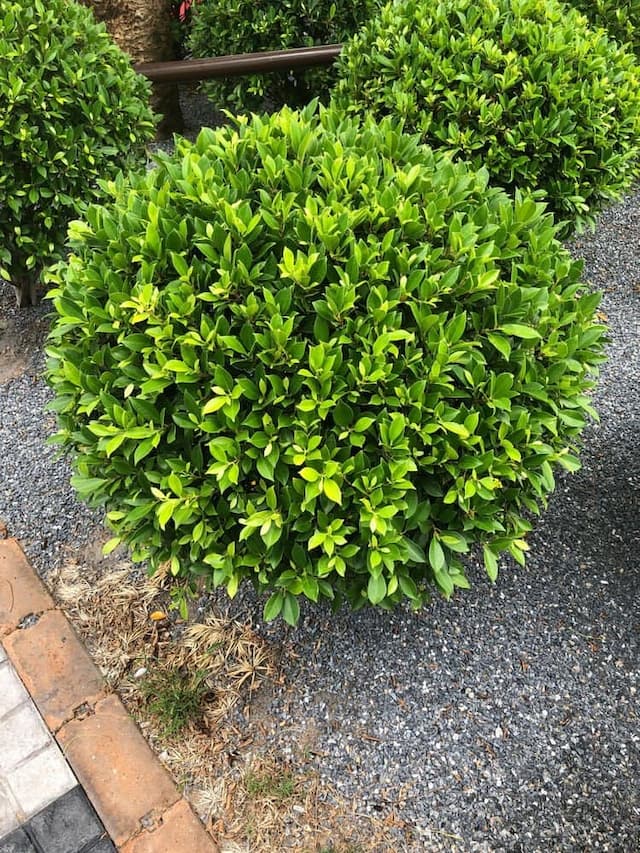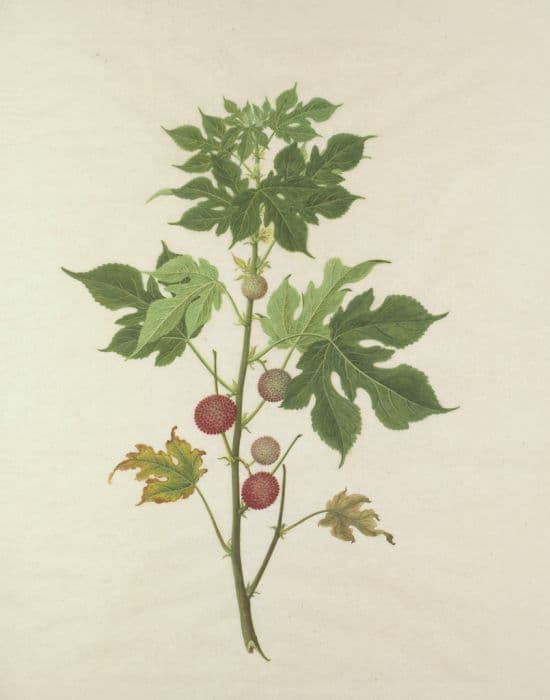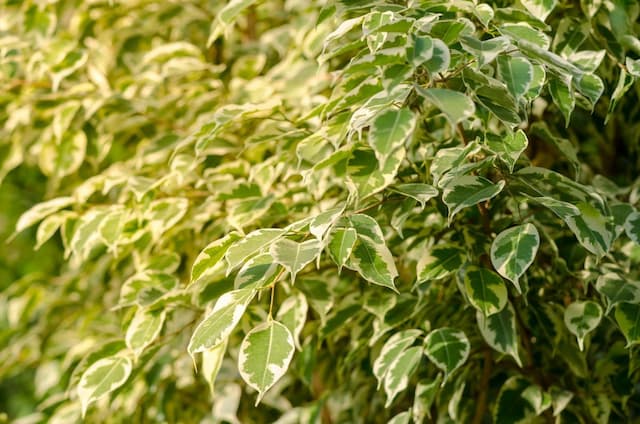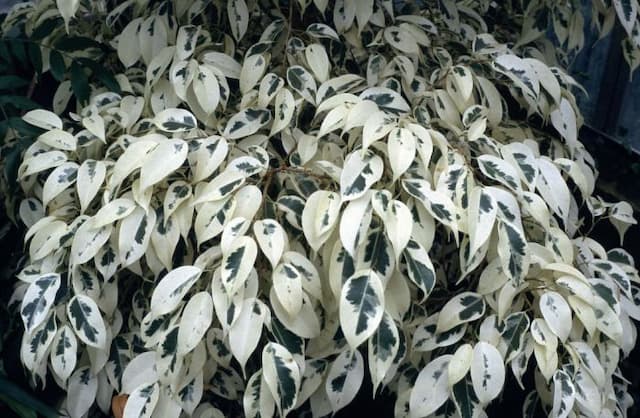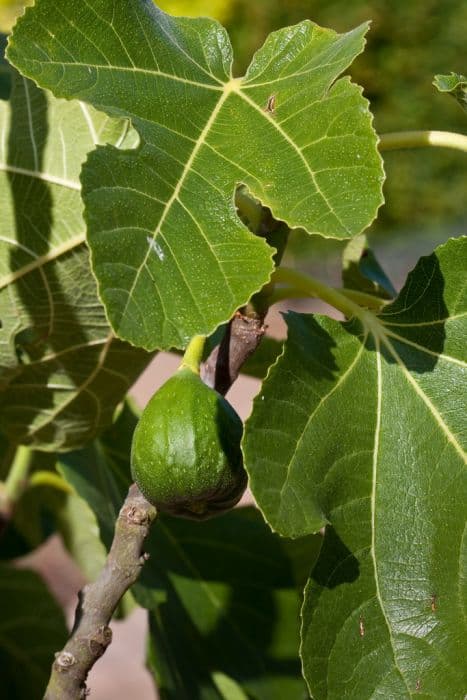Creeping Fig Ficus pumila

ABOUT
The Ficus pumila, commonly known as the creeping fig, is a fast-growing, vining plant known for its lush foliage and vigorous growth. It has small, heart-shaped leaves that are a rich green in color. These leaves are leathery to the touch and may have a slightly crinkled texture. In its juvenile stage, the leaves are smaller and tend to hug close to the surface it is climbing on. As the plant matures, it can develop larger, more robust leaves on woody stems. The creeping fig clings to surfaces with root-like structures that emerge along the vine, enabling it to adhere to and climb over different structures. When it blooms, which is not common in indoor settings, the plant produces small, nondescript flowers that are often overlooked due to their insignificant size and appearance compared to the foliage. The creeping fig can be easily shaped and pruned, which allows it to be used in various ornamental settings such as wall coverings, topiaries, or hanging baskets, where its draping foliage provides an elegant display.
About this plant
 Names
NamesFamily
Moraceae.
Synonyms
Creeping Fig, Climbing Fig, Fig Ivy, Creeping Ficus.
Common names
Ficus repens, Ficus scandens, Ficus pumila var. awkeotsang, Ficus stipulata.
 Toxicity
ToxicityTo humans
Creeping fig is not considered to be toxic to humans. However, like many Ficus species, it can cause skin irritation in sensitive individuals due to the presence of its sap, which contains compounds that can be irritating. If ingested, parts of the plant can cause stomach upset or digestive discomfort. It is recommended to avoid consumption and contact with the sap to prevent any potential adverse reactions.
To pets
Creeping fig can be toxic to pets if ingested. The plant's sap contains irritating compounds, and ingestion can lead to oral irritation, salivation, vomiting, and diarrhea in animals such as cats and dogs. If a pet has consumed creeping fig, it is advisable to consult a veterinarian. Skin contact with the sap may also result in dermatitis for some pets, so it is best to keep the plant out of reach.
 Characteristics
CharacteristicsLife cycle
Perennials
Foliage type
Evergreen
Color of leaves
Green
Height
3 feet (0.91 meters)
Spread
3 feet (0.91 meters)
Plant type
Climber
Hardiness zones
9
Native area
East Asia
Benefits
 General Benefits
General Benefits- Easy to Grow: Ficus pumila is known for being easy to care for and can thrive in a variety of environments.
- Visual Appeal: With its lush greenery and rapid growth, the creeping fig can quickly cover walls and surfaces, adding aesthetic value to any space.
- Low Maintenance: This plant doesn't require frequent watering or complex care routines, making it ideal for those who want a beautiful plant without a lot of work.
- Adaptability: It can be grown both indoors and outdoors, in hanging baskets, as a ground cover, or even as a climbing vine.
- Heat Tolerant: It can withstand high temperatures, making it suitable for warmer climates and indoor environments that receive a lot of sunlight.
- Drought Resistant: Once established, the creeping fig is quite drought tolerant and can survive with minimal watering.
- Soil Versatility: Ficus pumila can tolerate a wide range of soil types, although it prefers well-draining soil.
- No Serious Pest or Disease Problems: Generally, this plant is not prone to major pest or disease issues, making its care even simpler.
 Medical Properties
Medical Properties- Anti-inflammatory: Ficus pumila contains compounds that may help in reducing inflammation.
- Antioxidant: It has been suggested that the plant has antioxidant properties which can help in preventing damage caused by free radicals.
- Antimicrobial: Some studies suggest that extracts of Ficus pumila may possess antimicrobial activities against certain pathogens.
- Wound healing: There is evidence to suggest that Ficus pumila may promote wound healing due to its various phytochemicals.
 Air-purifying Qualities
Air-purifying QualitiesThis plant is not specifically known for air purifying qualities.
 Other Uses
Other Uses- Craft Material: Creeping fig can be used in craft projects as a natural decoration, such as in wreath-making or terrariums, providing a lush green look with its small leaves.
- Climbing Support for Other Plants: The strong and vigorous nature of creeping fig can support and act as a living trellis for other climbing plants in a garden.
- Miniature Garden Embellishment: Its fine texture and dense foliage make it a popular choice for creating realistic miniature gardens or fairy gardens.
- Erosion Control: Creeping fig can be planted on slopes or banks to help prevent soil erosion due to its ability to form dense mats of foliage.
- Education: The plant can be used in educational projects to teach about invasive species, propagation, or plant growth habits.
- Screening Fences: The vine's thick growth habit can be utilized to create a natural, living screen on fences or walls for added privacy.
- Topiary Framework: It can be grown on topiary frames to create interesting shapes and living sculptures in gardens and landscape designs.
- Culinary Garnish: Although not a common use, the leaves of creeping fig can be used as an edible garnish for some dishes after proper cleaning and ensuring they are free of pesticides.
- Photography Prop: Photographers might use creeping fig as a backdrop or a prop for natural-looking photographs, adding texture and greenery to the composition.
- Bonsai Material: Some enthusiasts might utilize creeping fig for bonsai due to its ability to be shaped and to develop a lush appearance in miniature form.
Interesting Facts
 Feng Shui
Feng ShuiThe Creeping Fig is not used in Feng Shui practice.
 Zodiac Sign Compitability
Zodiac Sign CompitabilityThe Creeping Fig is not used in astrology practice.
 Plant Symbolism
Plant Symbolism- Resilience: Ficus pumila, commonly known as creeping fig, can grow in challenging conditions, climbing and covering walls and surfaces with vigor. This exemplifies its capacity to adapt and thrive in varied environments.
- Perseverance: The creeping fig is often seen continuing to spread and grow, even in the face of obstacles. This tenacity is seen as a metaphor for persisting through difficulties.
- Growth and Expansion: Given its nature to spread quickly, the creeping fig symbolizes expansion, whether that be personal growth, spreading of ideas, or expansion of one's territory.
- Endurance: The plant's hardy nature, able to cling to almost any surface, signifies endurance and the ability to withstand hardships.
 Water
WaterThe Creeping Fig (Ficus pumila) prefers to be watered when the top inch of soil feels dry to the touch. It generally needs a thorough watering every week, but this can vary depending on the humidity and temperature of the environment. When watering, ensure that water is evenly dispersed throughout the pot until it begins to drain from the bottom. Depending on the size of the pot, roughly 16 to 32 ounces once a week should suffice for a small to medium-sized plant. Always allow excess water to drain away, as standing water can lead to root rot.
 Light
LightThe Creeping Fig thrives in bright, indirect light and can also adapt to lower-light conditions. A spot near an east or north-facing window is ideal as it provides plenty of light without direct sun exposure. Avoid placing it in direct sunlight, especially during the hot afternoon hours, to prevent leaf burn.
 Temperature
TemperatureThe Creeping Fig prefers a moderate temperature range, ideally between 60-80 degrees Fahrenheit. It can tolerate a minimum temperature of about 55 degrees Fahrenheit and a maximum of around 85 degrees Fahrenheit. To thrive, keep the Creeping Fig away from cold drafts and sudden temperature fluctuations.
 Pruning
PruningPruning the Creeping Fig helps maintain its shape and encourage fuller growth. It's best to prune in the spring or early summer when the plant is actively growing. Trim back any unwanted or overgrown vines using clean, sharp scissors, and remove any dead or yellowing leaves to promote plant health. Pruning every few months is sufficient to keep your Creeping Fig looking tidy and vibrant.
 Cleaning
CleaningAs needed
 Soil
SoilCreeping Fig (Ficus pumila) thrives in a well-draining soil mix, composed of one part perlite or sand to two parts peat or any good quality organic potting mix. The ideal soil pH for Creeping Fig is slightly acidic to neutral, ranging between 6.0 to 7.5.
 Repotting
RepottingCreeping Fig should be repotted every two to three years to prevent it from becoming root-bound and to replenish nutrients in the soil. Younger, more vigorously growing plants may need repotting more frequently.
 Humidity & Misting
Humidity & MistingCreeping Fig prefers a moderate to high humidity level, ideally between 40% to 60% humidity. However, it can tolerate lower humidity levels commonly found in home environments.
 Suitable locations
Suitable locationsIndoor
Place Creeping Fig in bright, indirect light and maintain high humidity.
Outdoor
Plant Creeping Fig in a shaded area and protect from direct sun.
Hardiness zone
9-11 USDA
 Life cycle
Life cycleThe Creeping Fig (Ficus pumila) begins its life cycle as a seed, which germinates in moist, warm conditions often in the crevices of host trees or buildings. As a seedling, it uses its small, heart-shaped juvenile leaves to photosynthesize and starts to produce long, slender stems that climb and adhere to surfaces with tiny rootlets. As it matures, the plant spreads rapidly and can cover large areas if left unchecked, transitioning to its adult leaf form which is larger and thicker. The Creeping Fig then develops inedible, small fig-like fruits when pollinated by specific wasps that coevolved with ficus species, although flowering and fruiting are rare when grown indoors or in non-native environments. After reaching maturity, the plant can continually spread and produce new climbing stems, which can root and establish as individual plants when they contact soil. The Creeping Fig's lifecycle can end when the plant is subjected to harsh conditions such as extreme cold or drought, or when it is intentionally removed due to its invasive nature.
 Propogation
PropogationPropogation time
Spring-Early Summer
For the Creeping Fig, also known as Ficus pumila, the most popular method of propagation is through stem cuttings. This process is ideally undertaken during the spring or early summer when the plant's growth is most active. To propagate by cuttings, one should select a healthy segment of stem approximately 4 to 6 inches (about 10 to 15 cm) long, ensuring it has a few leaves. After cutting just below a leaf node, the lower leaves are removed, and the cut end is dipped in rooting hormone powder to encourage root development. The prepared cutting is then planted in a moist potting mix and kept under bright, indirect light with consistently moist soil. Roots generally form within a few weeks, after which the new Creeping Fig can be gradually acclimated to its typical growing conditions.
